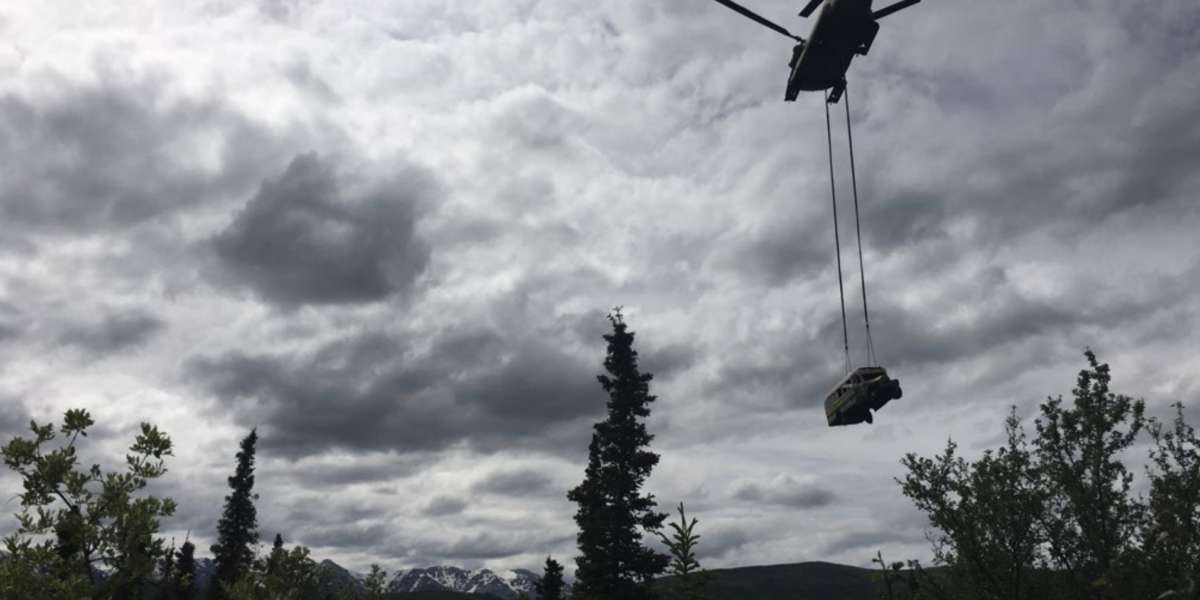
Iconic “Into the Wild” Bus Removed from Alaska Trail
The bus was made famous by the 1996 book Into the Wild.

Courtesy of the Alaska Department of Natural Resources
The iconic Fairbanks City Bus 142, popularized by John Krakauer’s 1996 book Into the Wild and the 2007 film bearing the same name, was removed this week from Alaska’s backcountry.
The 1940s-era bus was airlifted as part of a joint effort by the Alaska Department of National Resources and members of the Alaska Army National Guard.
Bus 142 was first abandoned near Denali National Park in 1961 after serving as temporary living quarters for construction workers, but it wasn’t until the world was made aware of the story of Chris McCandless, a 24-year-old adventurer who spent 114 days at the site during the summer of 1992, that the site would attract pilgrims eager to retrace the steps of the Virginia native.
McCandless spent a little more than two months using the bus as his home before deciding to return to civilization, plans that were thwarted by the meltwater-swollen banks of the Teklanika River.
Without a topographical map, McCandless, who also went by the pseudonym “Alexander Supertramp,” missed numerous features within walking distance that would have made his river crossing possible.
Instead, the dejected 24-year-old returned to the bus and penned a July 1992 journal entry that cast an ominous shadow over his return.
“Rained in. River look impossible. Lonely, scared.”
Chris McCandless tragically died of starvation approximately one month later. Nearly three weeks passed before his body was discovered by a group of hunters, who found him wrapped tightly in the sleeping bag his mother had made for him.
Visitors to the bus in the years since have oftentimes encountered the same natural obstacles that doomed McCandless, as miscalculations of rising waters and weather patterns result in stranded or seriously injured hikers.
Between 2009 and 2017 there were 15 rescue operations launched to assist bus-destined pilgrims. Dozens of additional incidents involving the turbulent water barriers of the Teklanika or Savage rivers have warranted local assistance.
On a trip from Belarus last year, 24-year-old Veramika Maikamava died when she was dragged under by the Teklanika’s relentless current, one of a flurry of incidents that has repeatedly prompted local Alaskans to call for the landmark’s removal.
“After studying the issue closely, weighing many factors and considering a variety of alternatives, we decided it was best to remove the bus from its location on the Stampede Trail,” Corri Feige, commissioner for the Department of Natural Resources, said in a release.
“We’re fortunate the Alaska Army National Guard could do the job as a training mission to practice airlifting vehicles, at no cost to the public or additional cost to the state.”
Feige added that the bus will be temporarily stored at a secure location until officials determine a permanent destination.
“We encourage people to enjoy Alaska’s wild areas safely, and we understand the hold this bus has had on the popular imagination,” Feige said.
“However, this is an abandoned and deteriorating vehicle that was requiring dangerous and costly rescue efforts, but more importantly, was costing some visitors their lives. I’m glad we found a safe, respectful, and economical solution to this situation.”
Watch footage of the airlift below.
